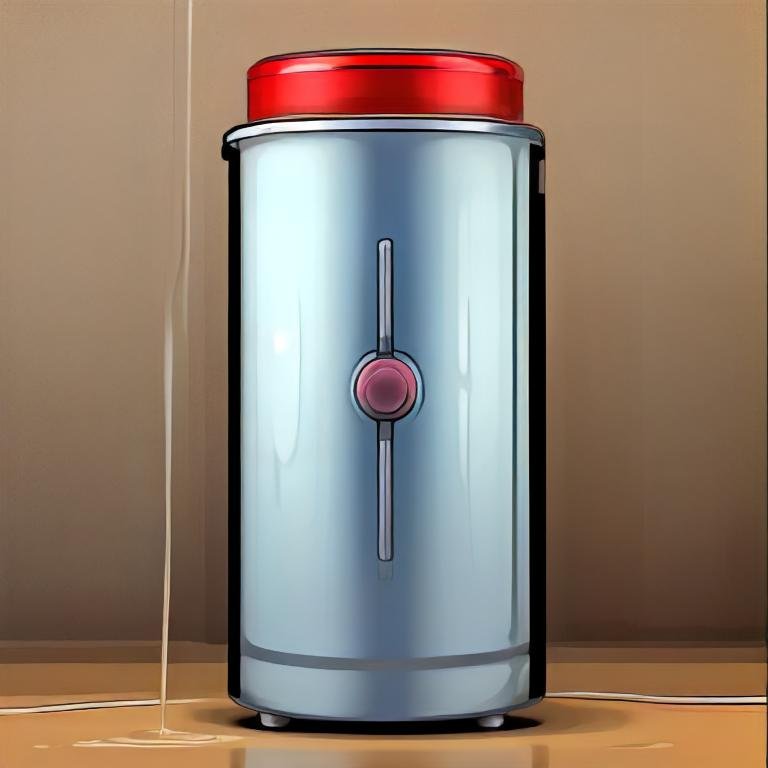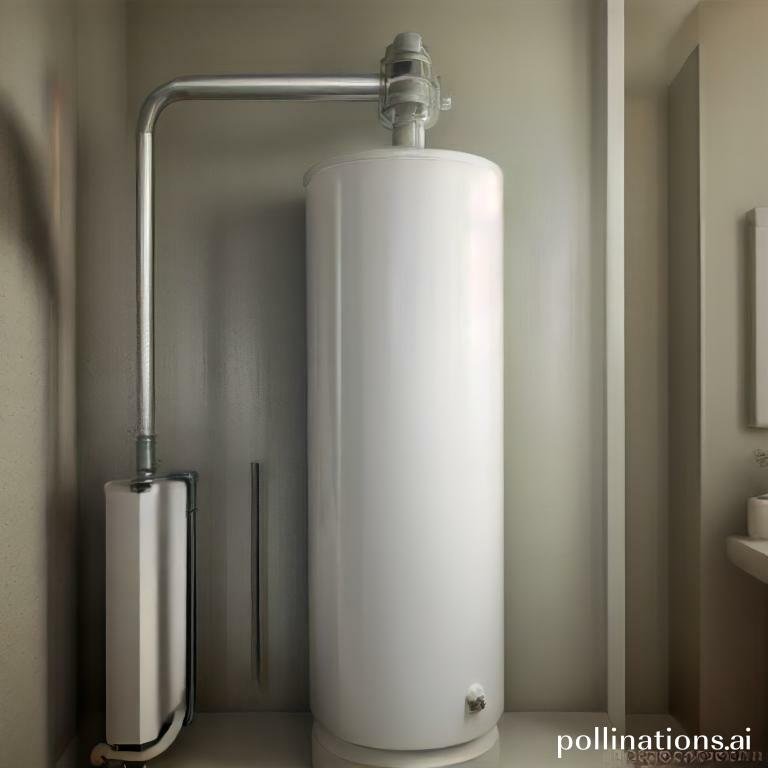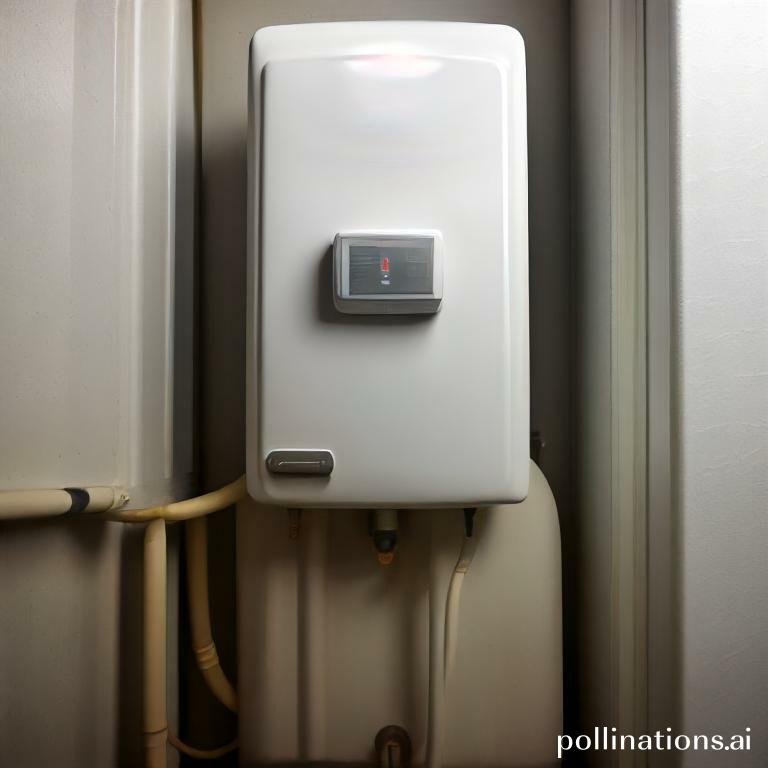
II. Accumulated sediment and minerals in the tank can cause corrosion and reduce efficiency.
III. Flushing removes these deposits and helps maintain optimal performance and energy efficiency.
Flushing your water heater regularly is essential for maintaining its lifespan. Over time, sediment and mineral deposits can build up in the tank, causing reduced efficiency and potential damage.
Flushing helps remove these deposits, improving the water heater’s performance and prolonging its lifespan. By eliminating the build-up, you can ensure that your water heater operates efficiently and effectively, providing you with hot water whenever you need it.
Regular flushing is a simple yet crucial task that can help prevent costly repairs or the need for premature replacement of your water heater.
What is Flushing?
Flushing refers to the process of cleaning out the sediment and mineral buildup from a water heater. This is an essential maintenance task that helps to ensure the optimal performance and longevity of the appliance.
Definition of Flushing
Flushing involves draining the water heater tank completely and then refilling it, effectively flushing out any accumulated sediment, rust, or minerals that may have settled at the bottom.
Importance of Flushing a Water Heater
Regular flushing of a water heater is crucial for several reasons. First, it helps to improve the efficiency of the appliance by removing the debris that can accumulate and hinder the heat transfer process. This, in turn, reduces energy consumption and lowers utility bills.
Second, flushing helps to prevent the buildup of sediment and minerals, which can lead to corrosion and damage to the tank. By removing these contaminants, you can extend the lifespan of your water heater and avoid costly repairs or replacements.
In closing, flushing also ensures that the water coming out of your taps is clean and free from any foul odors or discoloration. This is particularly important for maintaining the quality of hot water used for bathing, cooking, and other household activities.
How Often Should a Water Heater be Flushed?
The frequency of flushing a water heater depends on various factors such as the water quality in your area and the type of water heater you have. As a general guideline, it is recommended to flush your water heater at least once a year.
Despite this, if you notice signs of sediment buildup or experience a decrease in the performance of your water heater, it may be necessary to flush it more frequently. Consulting the manufacturer’s instructions or seeking professional advice can help determine the appropriate flushing schedule for your specific water heater.
| Benefits of Flushing a Water Heater |
|---|
| Improved Efficiency: Flushing removes debris and enhances heat transfer, reducing energy consumption. |
| Extended Lifespan: Regular flushing prevents corrosion and damage, prolonging the water heater’s lifespan. |
| Cleaner Water: Flushing ensures clean and odor-free hot water for various household activities. |
Benefits of Flushing a Water Heater
Flushing your water heater regularly offers numerous benefits that contribute to its overall efficiency and longevity. It is a simple yet essential maintenance task that should not be overlooked. By removing sediment and mineral buildup, you can ensure that your water heater operates at its best, providing hot water consistently and efficiently.
Improved Efficiency
One of the primary benefits of flushing a water heater is improved efficiency. Over time, sediment and mineral deposits can accumulate at the bottom of the tank, hindering the heating process. Flushing the water heater helps to clear out these deposits, allowing the heating element to function optimally. As a result, your water heater can heat water more efficiently, reducing energy consumption and saving you money on your utility bills.
Longer Lifespan of Water Heater
Regularly flushing your water heater can significantly extend its lifespan. When sediment builds up, it not only affects the efficiency but also puts additional strain on the tank and other components. This can lead to corrosion and premature wear and tear. By flushing out the sediment regularly, you can prevent these issues and help your water heater last longer, saving you from costly repairs or replacements.
Reduced Energy Bills
A water heater that is free from sediment buildup operates more efficiently, requiring less energy to heat the water. Flushing your water heater can help remove the sediment, allowing it to function optimally and reducing energy consumption. This, in turn, leads to lower energy bills, providing you with long-term cost savings.
Better Quality of Water
When sediment accumulates in your water heater, it can affect the quality of your water. Flushing the water heater helps to remove these deposits, resulting in cleaner and purer water. By eliminating sediment and mineral buildup, you can enjoy better-tasting water and avoid any potential health concerns that may arise from contaminated water.
Prevention of Leaks and Damages
Sediment buildup in a water heater can also contribute to leaks and damages. The accumulation of sediment can cause pressure imbalances and corrosion, leading to leaks and potential water damage. Flushing your water heater removes the sediment, reducing the risk of leaks and damages, and ensuring the continued reliable operation of your water heater.
How to Flush a Water Heater
Flushing a water heater is an important maintenance task that helps to prolong its lifespan and ensure optimal performance. By regularly flushing your water heater, you can remove sediment and mineral buildup, improving its efficiency and preventing potential issues. Follow these steps to effectively flush your water heater:
1. Turn off Power/Gas Supply
Before starting the flushing process, it is crucial to turn off the power or gas supply to the water heater. This step ensures your safety and prevents any accidents or damage.
2. Drain the Tank
Locate the drain valve on your water heater and attach a garden hose to it. Place the other end of the hose in a suitable drainage area, such as a floor drain or outside. Open the drain valve to allow the water to flow out of the tank. Be cautious as the water might be hot. Keep draining until the water runs clear, indicating that all sediment has been removed.
3. Flush the Tank
To thoroughly flush the tank, turn on the cold water supply to the water heater. This will help to agitate any remaining sediment and flush it out through the drain valve. Continue flushing until the water runs clear and free of any debris.
4. Refill the Tank
Once the tank is completely drained and flushed, close the drain valve and disconnect the garden hose. Turn on the cold water supply to refill the tank. Allow the tank to fill completely before proceeding to the next step.
5. Turn on Power/Gas Supply
Finally, once the tank is refilled, you can turn on the power or gas supply to your water heater. Follow the manufacturer’s instructions to safely restore the power or gas connection and ensure proper functioning of the water heater.
Regularly flushing your water heater is essential to maintain its efficiency and prolong its lifespan. By embracing these steps, you can effectively remove sediment and mineral buildup, ensuring optimal performance and preventing potential issues.

Signs that a water heater needs flushing
Regular maintenance of your water heater is crucial to ensure its optimal performance and longevity. One important aspect of maintenance is flushing the water heater periodically. Flushing helps remove sediment and mineral buildup that can accumulate over time, affecting the efficiency and functionality of the heater. Here are some signs that indicate your water heater may need flushing:
1. Discolored water
If you notice rusty or brownish water coming out of your faucets, it could be a sign that your water heater needs flushing. Sediment buildup inside the tank can cause the water to become discolored. Flushing the heater will help remove the sediment and restore the clarity of your water.
2. Strange noises
If you hear loud pops, crackling sounds, or rumbling noises coming from your water heater, it may be an indication of sediment buildup. As the sediment heats up, it creates bubbles and steam, resulting in these unusual noises. Flushing the heater can help eliminate the sediment and reduce the noise levels.
3. Reduced water pressure
A decrease in water pressure could be a sign that your water heater needs flushing. Sediment buildup can clog the pipes and restrict the flow of water, causing a drop in pressure. Flushing the heater will help clear the pipes and restore proper water pressure throughout your home.
4. Foul odor
If your hot water has a foul smell, it could be due to bacteria growth in the sediment inside the water heater. Flushing the heater will help remove the bacteria and eliminate the unpleasant odor, ensuring that your hot water is clean and fresh.
Regularly checking for these signs and scheduling a flushing of your water heater when necessary can help maintain its efficiency and extend its lifespan. Consult the manufacturer’s instructions or a professional plumber for guidance on how often you should flush your specific water heater model.
| Signs that a water heater needs flushing |
|---|
| Discolored water |
| Strange noises |
| Reduced water pressure |
| Foul odor |

Common Mistakes to Avoid When Flushing a Water Heater
Flushing a water heater is an essential maintenance task that can prolong the lifespan and efficiency of your unit. Notwithstanding, there are several common mistakes that people often make during this process. By being aware of these mistakes and taking the necessary precautions, you can ensure a successful and effective water heater flush.
1. Not Turning Off Power/Gas Supply
Before starting the flushing process, it is crucial to turn off the power or gas supply to your water heater. This step is essential to prevent any accidents or injuries during working on the unit. Make sure to follow the manufacturer’s instructions for safely disconnecting the power or gas supply.
2. Not Letting the Tank Cool Down
Flushing a water heater involves draining the hot water from the tank. It is vital to allow the tank to cool down before starting the flush. Hot water can cause burns and injuries if not handled with caution. Give the tank sufficient time to cool down to a safe temperature before proceeding with the flush.
3. Not Draining the Tank Completely
During the flushing process, indispensable to fully drain the tank to remove any sediment or debris that has accumulated over time. Failing to drain the tank completely can result in reduced efficiency and potential damage to the water heater. Open the drain valve fully and ensure that all the water is flushed out before proceeding.
4. Not Flushing the Tank Properly
When flushing the tank, it is essential to follow the correct procedure to ensure a thorough clean. This involves opening the drain valve and allowing the water to flow until it runs clear. Repeat this process multiple times if necessary to remove any remaining sediment. Following the recommended flushing technique will help maintain the optimal performance of your water heater.
5. Not Refilling the Tank Correctly
After completing the flush, it is crucial to refill the tank properly. Failure to refill the tank correctly can lead to airlocks or other issues within the system. Close the drain valve securely and carefully turn on the water supply to refill the tank. Ensure that the tank is filled to the appropriate level before restoring power or gas supply.
Bottom Line
Flushing your water heater regularly can significantly increase its lifespan by preventing sediment buildup and corrosion. Neglecting to flush your water heater can lead to decreased efficiency, higher energy bills, and even premature failure. It is recommended to flush your water heater at least once a year, or more frequently if you have hard water or notice signs of sediment buildup. Flushing your water heater is a simple and inexpensive maintenance task that can save you money in the long run by extending the life of your appliance and improving its performance.
Read More:
1. Flushing As Part Of Annual Water Heater Maintenance
2. Can I Flush My Water Heater While It’s In Use?











